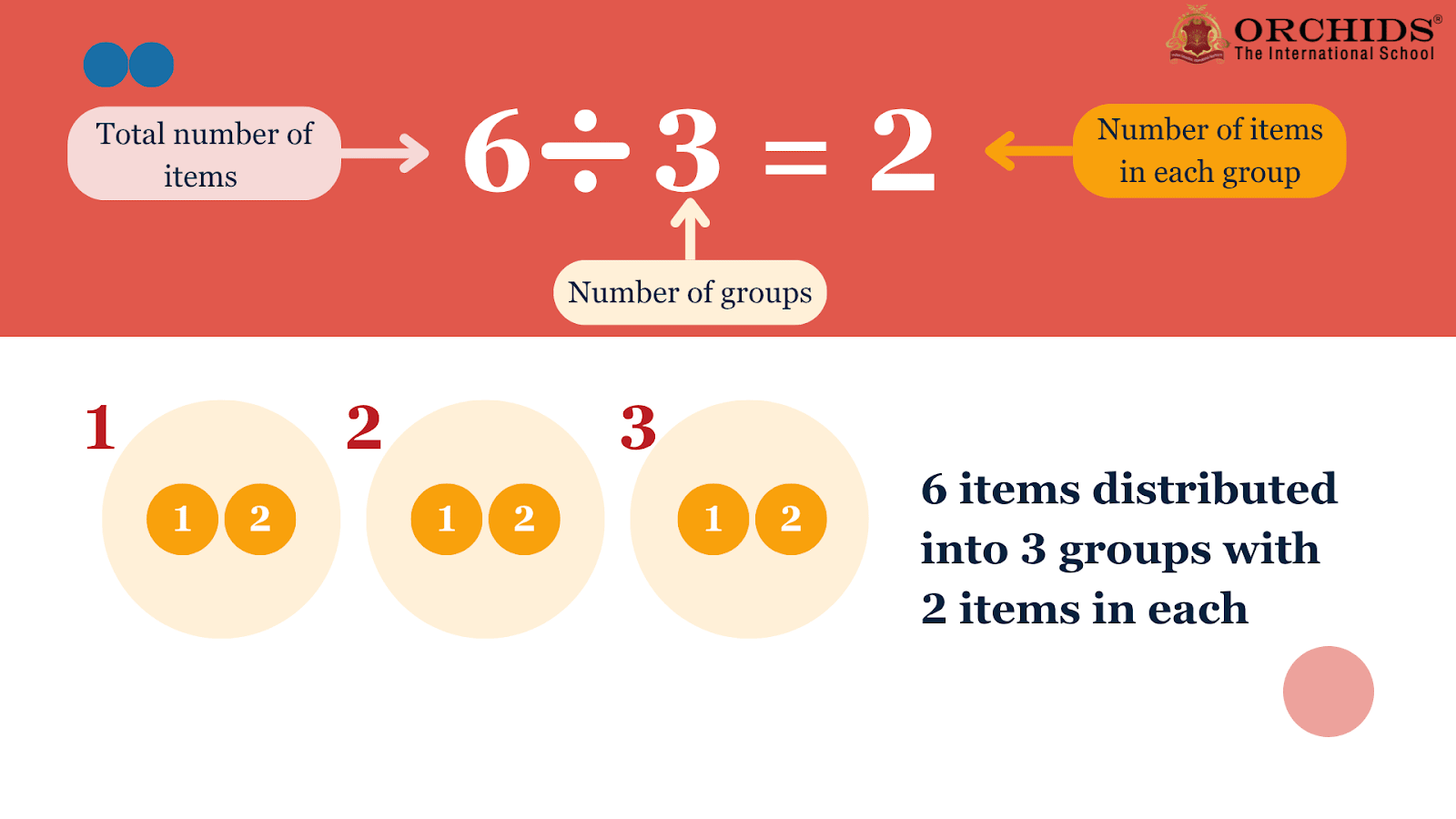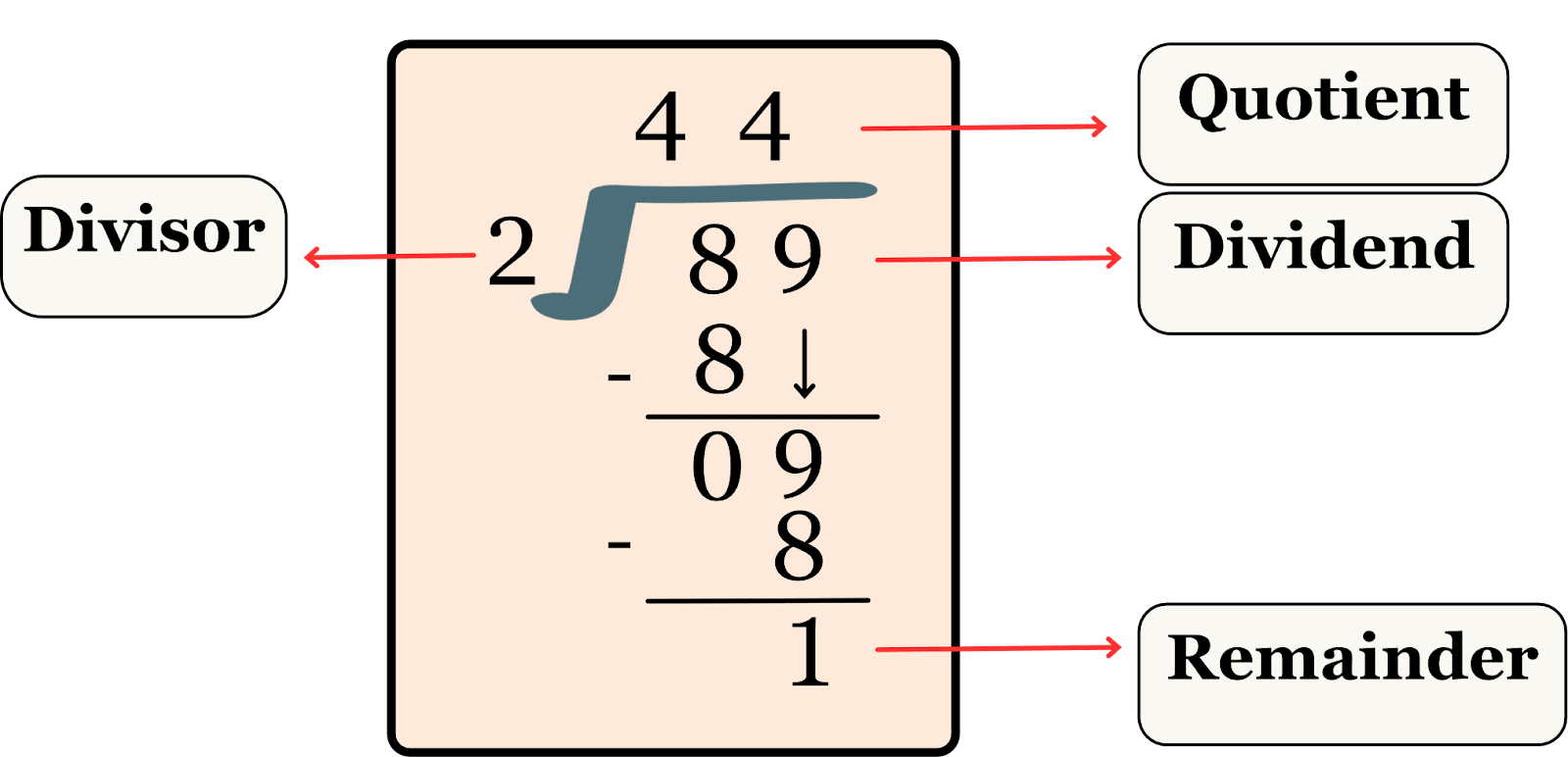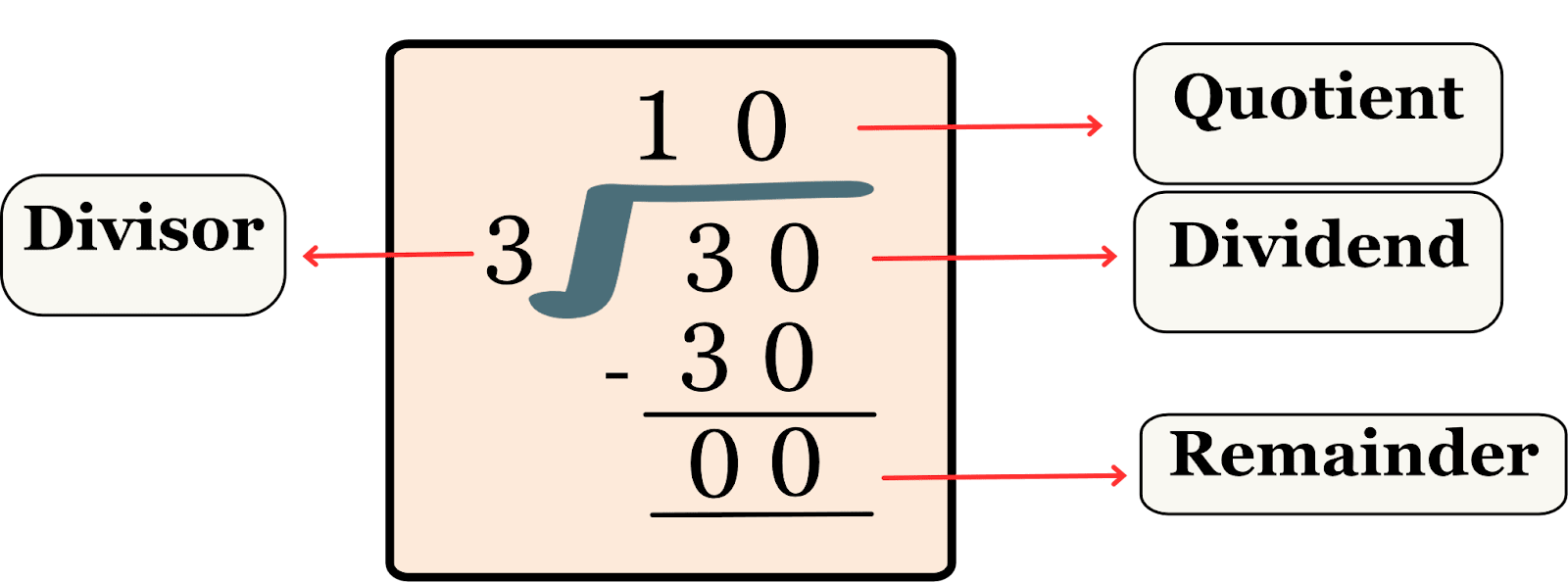Dividend
A dividend is a number that is divided by another number. In mathematics, division is one of the four basic operations.Dividends play an important role in this. It comes before the division symbol in the division equation. There are four parts in the division process, they are: dividend, divisor, quotient and remainder. For example, 4 ÷ 2 = 2.
Here, 4 is the dividend, 2 after the division symbol is the divisor and the result 2 is the quotient.
The four basic operations in arithmetic are addition, subtraction, multiplication and division. Division is one of the basic arithmetic operations. In this article, we will learn the term “Dividend”, with some examples.
Table of Contents
- What is a Dividend?
- Division Terms
- How to Identify the Dividend in a Division Problem?
- Dividend Formula
- Examples of Dividend in Division
- Word Problems Using Dividend
- Conclusion
- FAQs on Dividend
What is a Dividend?
A dividend is a total item or amount that is to be divided into equal shares. A number that is divided by another number is known as a dividend. The division equation is as follows:

Dividend comes before the division symbol and the divisor comes after the division symbol.
In other words, the numerator is the dividend and the denominator is the divisor as per the fraction.

Division Terms
The division is nothing but repetitive subtraction. It is also the inverse of multiplication. This arithmetic operation breaks large numbers into smaller groups where each group contains an equal number of items. Suppose, for a cultural event in school, a teacher should divide students into equal groups; then the division is used.

The general division symbol in mathematics is represented by a small straight line with dots above and below the line (÷). It is also expressed by a small slanting line or slash.
The terms used in the division process are the parts of division. There are four parts or terms, i.e., divisor, dividend, quotient and remainder. Let us observe the table below for a better understanding of the terms with an example.
Example: Divide 89 by 2. When we divide 89 by 2, the result will be 44 is the quotient, and 1 is the remainder.
|
Terms |
Definition |
Example |
|
Divisor |
The number by which we divide another number (dividend). |
2 |
|
Dividend |
The number that we would be dividing. |
89 |
|
Quotient |
The result obtained after the division. |
44 |
|
Remainder |
The leftover value after the division. |
1 |

The above image shows the parts of the division that are the divisor, dividend, quotient, and remainder.
How to Identify the Dividend in a Division Problem?
To identify the dividend in a division problem, follow the following steps.
-
Look at the division format.
-
Standard Format:
Dividend ÷ Divisor = Quotient
Example: 25 ÷ 5 = 5, 25 is the dividend.
-
Fraction Format:

-
Long Division Format:
The number written inside the long division symbol (厂) is the dividend.
-
The total number to be divided.
-
The dividend always comes before the division symbol.
Dividend Formula
The product of the divisor and quotient, added to the remainder, is always equal to the dividend.

This formula is also known as the division algorithm. The formula is widely used to verify the division. Substitute the values of divisor, dividend, quotient and remainder into the formula and check the result.
Example: Divide 33 by 2. When we divide 33 by 2, we get a quotient of 16 and a remainder of 1.

Examples of Dividend in Division
Example 1:
Kira has 42 stickers. She puts the same number of stickers on each of the 6 folders. Write the expression that shows how many stickers she puts on each folder.
Solution:
To find out how many stickers Kira puts on each folder, we divide the total number of stickers by the number of folders.
Expression: 42 ÷ 6
42 is the dividend and 6 is the divisor.
Example 2:
Tammy picked 48 flowers. She placed them equally into 8 vases. How many flowers are in each vase? Show the dividend, divisor and quotient.
Solution:
The total flowers picked by Tammy is 48.
Divide 48 flowers by 8.
48 ÷ 8 = 6
There are 6 flowers in each vase.
We know that the total number that is to be divided into equal parts is the dividend. So, in this case, 48 is the dividend, 8 is the divisor and 6 is the quotient.
Word Problems Using Dividend
Q1. Sanjay had 3 plates of apples, with 30 apples in total. How many apples were there on each plate?
Solution:
Given,
Sanjay had 3 plates of apples.
The total number of apples is 30.
To find the number of cookies on each plate, divide the total number of cookies by the number of plates.
30 ÷ 3

Therefore, there are 10 apples on each plate.
Q2. Divide 8642 by 2.
Solution:

Conclusion
To master the division, the dividend is an essential concept. Not only dividend, divisor, quotient and remainder also have equal preference. The division helps in situations like distributing, dividing money, splitting items, etc. Whether you are distributing food or making groups for events, knowing how to work with dividends, divisors, and quotients is key. Keep practicing to build confidence and apply division concepts with ease in real-life situations.
FAQs on Dividend
Q1. What is the dividend?
Answer: A dividend is the number that is being divided in a division operation. For example, in 20 ÷ 4 = 5, the number 20 is the dividend.
Q2. Write the formula to find the dividend.
Answer: The formula to find the dividend is:
Dividend = Divisor × Quotient + Remainder
Q3. What are the terminologies of Division?
Answer: There are 4 terms in division. They are:
-
Dividend
-
Divisor
-
Quotient
-
Remainder
Q4. How do you divide when the divisor is bigger than the dividend?
Answer: If the divisor is bigger than the dividend, that means you are dividing a small number by a large number. One way is to add zero to the right of the dividend until the number is suitable for dividing and the result will be in a fraction or decimal.
Q5. Find the dividend. If the divisor is 5, the quotient is 10 and the remainder is 0.
Answer: Dividend = Divisor × Quotient + Remainder
Dividend = (5 × 10) + 0
Dividend = 50 + 0
Therefore, the dividend is 50.
Related Links
Admissions Open for
Admissions Open for
CBSE Schools In Popular Cities
- CBSE Schools in Bangalore
- CBSE Schools in Mumbai
- CBSE Schools in Pune
- CBSE Schools in Hyderabad
- CBSE Schools in Chennai
- CBSE Schools in Gurgaon
- CBSE Schools in Kolkata
- CBSE Schools in Indore
- CBSE Schools in Sonipat
- CBSE Schools in Delhi
- CBSE Schools in Rohtak
- CBSE Schools in Bhopal
- CBSE Schools in Aurangabad
- CBSE Schools in Jabalpur
- CBSE Schools in Jaipur
- CBSE Schools in Jodhpur
- CBSE Schools in Nagpur
- CBSE Schools in Ahmednagar
- CBSE School In Tumkur











